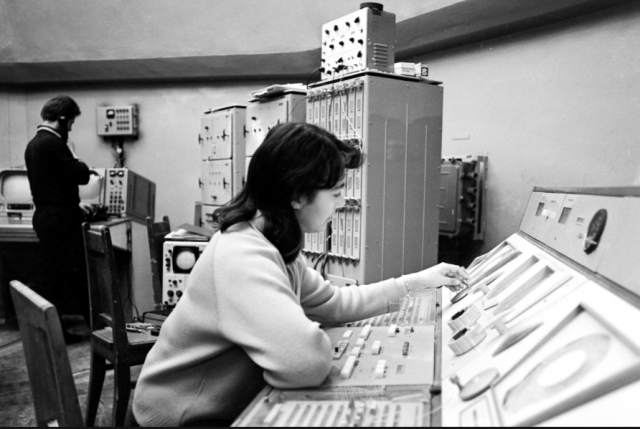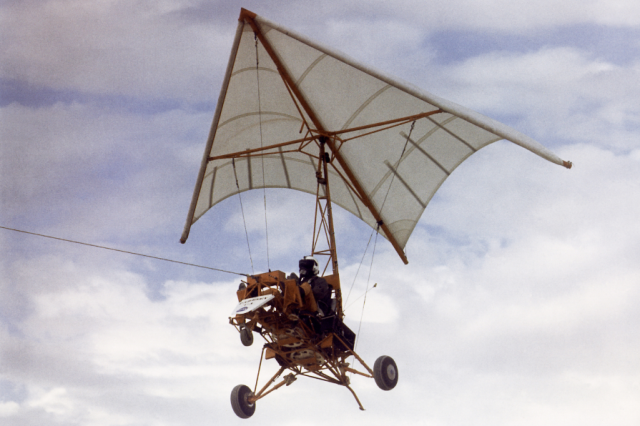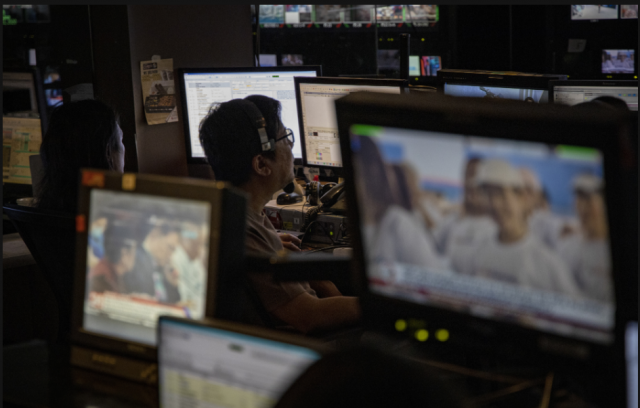Products, materials and technologies created within the framework of space programs have become firmly embedded in modern life. Using communication, navigation applications in a smartphone, watching TV, we sometimes do not think that these and many other familiar things now have cosmic roots. TASS — how space technologies help us every day
Space unites
Soviet space programs were initially aimed at strengthening the country's defense capability. As follows from the recently declassified documents, "elements of combat use" were supposed to be practiced even on ships of the Vostok type, on which the first cosmonauts flew. However, in the USSR, units of defense enterprises produced a significant amount of civilian products (by 1989 it exceeded the output of military products), and the military-industrial complex was the core of high-tech civilian industries — nuclear, space, aviation, and microelectronics.
A number of Soviet dual-use developments using space technologies have outstripped their foreign counterparts. For example, in the late 1950s, the United States and the Soviet Union began experimenting with the use of artificial Earth satellites as repeaters of terrestrial radio communication systems. In 1965, the USSR launched the first communications satellite of the Molniya series into orbit and launched a satellite communication system between the center of the country and remote regions. The highly elliptical orbit ensured the satellite's visibility throughout the Union territory for 8 hours. Molniya made it possible to retransmit the television signal and telephone communication channels to the Orbita receiving stations, from where they were transmitted to end users. This is how the world's first nationwide television broadcasting network was launched, many years ahead of other countries.
"20 such Earth stations were built before 1967. Any settlement that built an "Orbit" got the opportunity to receive Moscow TV programs," academician Boris Chertok recalled in the book "Rockets and People. The hot days of the Cold War." — By 1984, there were already more than 100 of them! The Orbit towers, crowned with parabolic antennas with a diameter of 12 meters, have become a source of special pride for local authorities, who confirm their involvement in the success of cosmonautics with such a landmark."
In 1976, the Ekran satellite was launched into a geostationary orbit. Now the retransmission of the signal has become permanent, and lower frequencies and high power of the on-board transmitter have made it possible to create simple and inexpensive receivers. In fact, the "Screen" became the first direct satellite broadcasting system in the world.
Today, domestic satellites of the Express series provide transmission of television and radio channels of all major media structures and independent broadcasters - on the territory of both Russia and most countries of the world. In addition, government and presidential communications work via satellites, data is transmitted, Internet access is provided, communication with naval vessels and much more.
 |
| The Orbita communication station. |
| Source: Bartholomew Teterin/ TASS |
Receivers of global navigation satellite systems (GNSS) signals are already available in almost every smartphone, they are equipped with airplanes, ships, cars. GNSS help to determine the location in space with high accuracy anywhere in the world. And it all started with military space developments — in the late 1950s, work began in the United States on the Transit navigation system in the interests of the navy, in the USSR in the early 1960s they began to create the low-orbit Cicada system. Now dual-purpose GNSS are helping to navigate in space: American GPS from 24 satellites, Russian GLONASS using 24 spacecraft, Chinese Beidou, European Galileo, as well as Indian and Japanese regional systems.
Yuri Borisov, Director General of Roscosmos, said that over the past decades, the priorities of the space industry have changed, transformations have taken place, as space services have become in demand by the market. "Space has become more commercially oriented. Today, the demand for space services is dynamically developing all over the world, this demand exceeds the average annual growth of global GDP," he said in an interview with the Pro Cosmos portal.
"Of course, this affects the transformation of the main activities of space agencies and accelerates the process of creating multi-satellite groupings. The latter is a top priority all over the world, including in Russia, in order to provide the necessary list of communication services, navigation, remote sensing of the Earth, weather forecasts, etc.," the head of Roscosmos added.
The Echo of American Space
National Aeronautics and Space Administration (NASA) The United States was created in 1958 — U.S. President Dwight D. Eisenhower signed the Act on Aeronautics and Space Exploration. Its text contained paragraphs calling on the new government structure to share patented and licensed technologies, as well as providing financial incentives for inventors. The amendments to the legislation that followed in the 1980s allowed and encouraged joint development with private entities, their commercialization and licensing.
As a result, much of what was originally created for the space industry found application in other areas, became widely known, and entered everyday life.
In the early 1960s, during the implementation of the American Gemini manned flight program, developers considered the option of a controlled gliding flight of the lander so that it landed in a given area. To do this, NASA engineer Francis Rogallo created a soft triangular wing produced by the device in the atmosphere. The development did not reach space, but the simplest aircraft with a delta-shaped wing was further developed and became popular all over the world. We know it as a hang glider. Flying on a simple glider with balancing controls has become an officially recognized sport by the International Aviation Federation.
 |
| Hang glider. |
| Source: NASA/ Public Domain/ Wikimedia Commons |
When the American lunar manned program was being developed, astronauts needed a self-powered drill to take soil samples at a depth of several meters. This device was developed by Black&Decker. In 1979, she introduced the DustBuster portable home battery vacuum cleaner, which used "moonlight" developments and became a hit of sales. Nowadays, wireless tools and household appliances have become widespread due to the advent of compact, capacious and inexpensive rechargeable batteries.
The presentation on the NASA website provides several more such examples.
The Temper Foam foam was created by NASA for shock-absorbing seats designed to protect astronauts from overloads. Foamed polyurethane has a memory effect: it takes the form of objects pressed into it, reducing the load on them by more than three times, and then returns to its original shape even with 90 percent deformation. Now such materials are used in orthopedic mattresses, aircraft seats, and protective sports equipment.
An engineer who participated in the work on the Apollo program (landing astronauts on the surface of the Moon) used another foamed plastic in the insoles of sports shoes, as well as a method of casting a polymer sole borrowed from the technology of manufacturing lunar spacesuits. This made it possible to significantly increase the comfort of shoes, reduce fatigue when moving.
By the way, in the 1970s, inspired by the appearance of lunar spacesuit shoes, Western designers released similar boots, which they called "lunar". The fashion for them has reached the USSR. In the 1980s, "dutiki" or "moonwalkers" — shoes of a characteristic appearance with a top made of metallized nylon fabric and a thick insulated liner — were in demand as a scarce commodity.
Nextel ceramic woven fabric can withstand heating up to 1,400 degrees Celsius. For example, protective suits for racing drivers are made of it. The fabric appeared during the work on the Space Shuttle reusable spacecraft program — engineers were looking for special materials that protect the shuttles from high temperatures during atmospheric entry.
Other special materials, technologies, and products were developed and licensed. All of them have found "earthly" application in various fields.
Space medicine for terrestrial patients
"The beginning of the space flight era has opened a new direction in fundamental science — gravitational physiology and space medicine," Elena Tomilevskaya, PhD, Head of the Department of Sensorimotor Physiology and Prevention at the Institute of Biomedical Problems (IBMP) of the Russian Academy of Sciences, said in an interview with TASS. — Until that time, scientists could only guess how important gravity plays in the work of the human body. Now we are seeing this in practice. And, accordingly, we understand how harmful "underutilization" is for the body, and therefore we can develop new methods to combat physical inactivity — a huge problem of modern society."
The specialist said that the means created to compensate for the lack of physical activity of astronauts in zero gravity are very effective in the practice of terrestrial rehabilitation — for example, after forced prolonged bed rest.
"For example, the Penguin axial loading suit was developed for space flights," Elena Tomilevskaya said. — This suit creates a load on the main groups of skeletal muscles of the legs, arms and torso with the help of built-in rubber bands. For the Earth clinic, the suit was modified <...> and became modular — shorts, vest, knee and shin modules. This costume is called "Regent", it is actively used in children with cerebral palsy, and in adult patients after stroke, traumatic brain injuries, and so on."
Another example is special shoes with insoles inflated by a pneumatic compressor. They create the pressure on the feet inherent in walking and running, thereby forming an "image of walking" in the brain.
"This tool was developed specifically for space flight to make up for the lack of support load, but in fact the terrestrial analogue was introduced into rehabilitation many years earlier than the space version got on board the space station. The terrestrial analogue was called "Corvit", and currently it is widely used in patients after stroke — even in the acute period, injuries, in children with cerebral palsy and other pathologies," explained the head of the Department of sensorimotor Physiology and prevention of IBD of the Russian Academy of Sciences, adding that the above—mentioned funds are actively used by over 300 clinics and rehabilitation centers More than 1 million patients have already used the centers in Russia and have used them.
Another Russian development for space programs used in terrestrial medicine is the so—called dry immersion, which reproduces the negative factors of space flight. A person plunges into a bath of warm water, covered with a waterproof film of excess area enveloping the body, and as if he falls into weightlessness. "It turned out that short sessions of immersion in an immersion bath can benefit healthcare: they help to relieve swelling, reduce muscle spasticity, normalize blood pressure, and so on," Elena Tomilevskaya said. This method is used, in particular, for the rehabilitation of children with serious illnesses or the consequences of strokes.
"The developments created for space programs did not arise from scratch, they are always based on terrestrial technologies, but, of course, they have to be significantly modified and adapted to the conditions of space flight. And it often turns out that these advanced flight technologies, in turn, successfully find their application on the Ground," the specialist concluded.
Victor Bodrov

